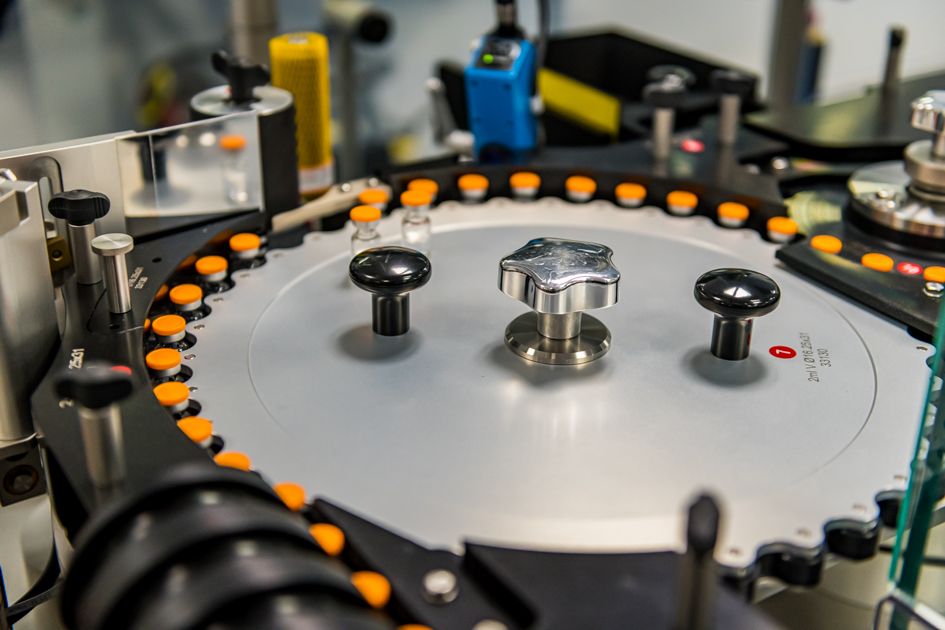COLUMBUS, Ohio — As vaccine providers prepare for an anticipated authorization for kids ages 5 to 11, they are placing orders for the lower-dose pediatric formulation of the Pfizer-BioNTech vaccine, which will ship in vials with caps that are orange instead of purple.
What You Need To Know
- An ordering process is underway for providers to get the pediatric version of the Pfizer vaccine
- Ohio Governor explains why it could be difficult for small providers to offer vaccines the first week
- One large primary care practice said it is hoping for 15,000 pediatric doses to begin the rollout
When the eligibility age was first lowered in May, for children 12-17, getting immunized was just a matter of finding a provider that had the Pfizer vaccine in stock.
If the authorization is expanded again, possibly as soon as the first week of November, newly eligible children will receive a 10 microgram dose, one-third of what is authorized for those 12 and older.
Trials showed the lower dose still generated a strong immune response in kids. Each vial of the pediatric vaccine will contain 10 doses, compared to 6 from the adult vaccine.

Because there would not be enough volume for an injection from one-third of an adult dose, there is a distribution process getting underway for the pediatric version.
Pediatrician Dr. Bonnie Pugh in Dublin, president of Central Ohio Primary Care’s board of directors, said their practice asked for 15,000 doses of the pediatric vaccine to offer centralized clinics and in-office immunizations to patients of their approximately 100 pediatricians.
“We may not get exactly what we are hoping for. I know that Pfizer has said to us that they will meet the demand — it just may not all be in the first week, and so I think we have to be patient like we were with the initial rollout last year when the vaccine came out,” Pugh said.
The Ohio Department of Health reported that the state has reserved the entire allocation that it has been offered from the federal government, spokesperson Alicia Shoults said Thursday.
“We have placed our initial reservation for the maximum amount Ohio has been allocated from the federal government for the first of three initial ordering waves, 138,900 doses. We will continue to place orders over the coming days within the maximum amount allocated from the federal government, approximately 347,000 doses,” Shoults said.
Gov. Mike DeWine said that as of Thursday the state has received orders for 172,000 doses for the first week of distribution. He explained that providers can still place orders for the first week, even if they missed the first of the three ordering periods.
The governor said he expects that many more will place orders beginning the second week, because providers can only place orders for 300 doses or more the first week. The minimum will drop to 100 in the second week.
“The federal government did something that we have to live with, and they made the decision that for the first week, all orders had to be at least 300 doses. That has inhibited some providers, particularly pediatricians' offices, from ordering for that first week,” DeWine told reporters Thursday during an event for the unveiling of a new license plate design.
Larger providers, like Central Ohio Primary Care and major hospitals, are ordering thousands of doses for the first week, so the minimum isn’t a significant consideration.
But for Harrison County, one of the least populous counties in the state, one 300 dose shipment is likely to cover a large portion of the county’s needs, according to the health department.
So far, about 160 children in Harrison County aged 12 to 17 have been vaccinated, said Garen Rhome, the health district administrator. That is less than a third of the demographic, but it’s on par with neighboring counties in southeast Ohio, he said.
“We’ve got our doses on order and the ancillary supplies come from ODH, so we stand ready,” he said.
The health department is capable of standing up large clinics for hundreds of residents to get vaccinated in a day — they did it in the winter for adults — but officials don’t expect that to be necessary for an expanded pediatric rollout, Rhome said.
Their walk-in clinic at the health department, which has capacity for several dozen people per day, should be adequate, he said. The health department is prepared to offer vaccines during evenings and weekends.

DeWine said his administration believes it’s important for vaccines to be available in every county the first week, and he said they are getting close to that goal.
Starting the second week, the state intends to begin an operation where workers will divide shipments into more manageable allocations that can be sent to smaller providers, DeWine said.
"Following the initial rollout of the pediatric vaccine in future weeks, the Ohio Department of Health’s Receipt, Store, and Stage warehouse will break down shipments into smaller packages for providers needing less vaccine. This will be managed by ODH staff with Ohio National Guard assistance, if necessary, as the Guard has done throughout the pandemic," Shoults added.
About 66 pediatricians' offices have ordered doses for the first week, and about a fourth of the state’s school districts have indicated a plan to hold at-school clinics, the governor said.
In Ohio, 55% of all residents and 64.3% of those eligible have received at least one dose, according to state data. For the 12-17 age group, 42.9% have started the vaccination process.
The state has announced a $2 million vaccine incentive program that will award scholarships to Ohioans 25 and under. There will be 150 $10,000 scholarships and five $100,000 scholarships, with the drawings expected to begin sometime after children 5 and older become eligible for vaccination.
While children’s hospitals aren’t quite as busy with COVID-19 patients as they were last month, DeWine said there remains a troubling number of kids who are very sick, including some in intensive care units. In rare cases, children, after contracting COVID-19, develop a post-inflammatory syndrome, which can impact the heart, lungs, kidneys and other organs.
DeWine said the next phase of the vaccine rollout is going to be critical, and his administration will be vocal along with health officials to encourage pediatric vaccination.
“In the next week, two weeks, there’s going to be real emphasis on why it's important to have your children vaccinated, so information is the most important thing I think that we can do,” he said. “We're going to continue to put the focus on kids.”
Pugh said that in addition to preventing the relatively uncommon cases of severe illness among children, expanded vaccine authorization would help reduce illness among those who are more vulnerable.
“We have to remember that kids are really great vectors of disease, so despite them not necessarily getting as sick as an adult or an immunocompromised person or an elderly person, if you have a grandparent or a baby at home that can't get vaccinated, getting our school-aged children vaccinated really does make a difference in preventing spread of disease,” she said.
The pediatric vaccines will ship with smaller needles, which is typical for child immunizations because kids have smaller arms, Pugh said. Even though there will be more logistics to vaccination with the introduction of a pediatric vaccine alongside booster shots, including the Moderna half-dose, she said health care workers are trained to keep track of it all.
“As with any drug administration, vaccines, pharmaceuticals, there's always a double-check system. There has to be. We have to know exactly what we're giving, and we have to double-check our lot numbers,” she said. “Things like the different colored cap are helpful, because it's a trigger for people and it's a good reminder.”



